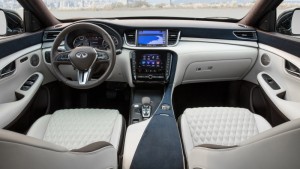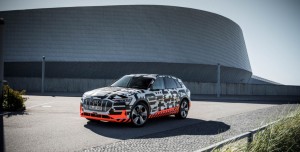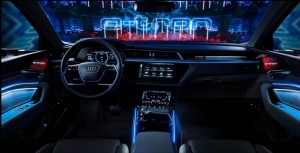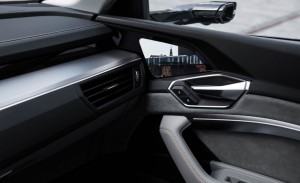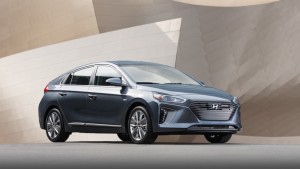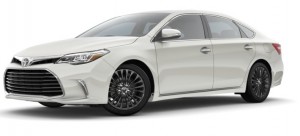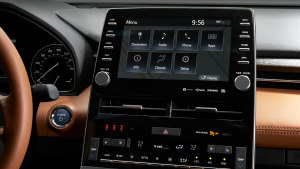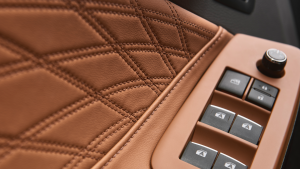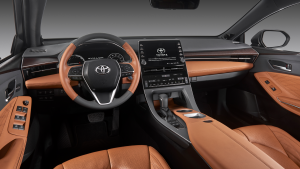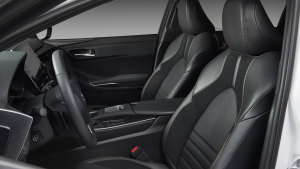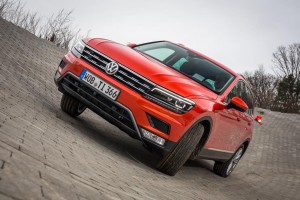Tag Archives: interior
2019 Infiniti QX50 Gets Fancy Autograph Package For Interior
The 2019 Infiniti QX50 has wowed industry experts and automobile fans because of its variable combustion engine that changes the compression ratio to maximize power and fuel efficiency. The engine could also change between Atkinson and regular combustion cycles, use either a multi-point or direct injection, and features an electric motor that controls the variable compression ratio.
If you’re not a fan of engines and grease and fuel efficiency, then maybe you might want to know how the QX50 will look inside? You won’t be disappointed as Infiniti just announced its newest Autograph Package that will transform the cabin of the QX50 into something akin to a luxury beach resort, thanks to a mixture of the latest Pantone color trends.
According to Infiniti, the interior will start with warmer color tones as the rich chocolate brown replicates wood applications in a beach resort and the surrounding trees. The creamy off-white will represent the sand on the beach while the highlights of cooler dark navy blue on the center console will remind us of ocean water.
The “proper balance” between warm and cool colors will create a “comfortable, yet invigorating environment.”
The cream, brown, and blue colors used in the package came from Pantone. The colors are called Coconut Milk, Emperador, and Sailor Blue, respectively. The Sailor Blue is applied to the center console, dash, and doors. The Emperador is seen on the steering wheel, leather-wrapped dash top and doors, the outer portions of the seats, and the lower door portions. Coconut Milk, on the other hand, is used on the dash color and the seat leather.
This is a special $2,000 option for the range-topping QX50 Essential trim level. Aside from the $2,000 Autograph Package, you would also have to pay $7,500 for the Sensory package and $550 for the ProAssist package, both of which are required. In total, you’re looking at a price tag of $54,395 for the most fashionable car ever.
Audi e-tron EV’s Interior Is Out Of This World
Ten years ago, the auto industry was so simple. There is a single screen on the dashboard that shows the gauge, temperature, speedometer, fuel levels, etc. There’s a radio that can play songs from your phone via a jack. There’s a dial for the aircon and the light could be switched on and off.
Those days are gone. Now, we’ve got two screens on the dashboard (both possible touchscreen), the seats are heated, there’s a parking assistance system, and the temperature is controlled by pre-programmed driver settings. The Audi e-tron EV’s interior is just another example of how times have changed.
The company has given us a glimpse of the in-car side-view screens (mirrors) that are attached to rear-facing exterior cameras. These officially replaced the traditional side-view mirrors.
The cameras’ views are going to be transmitted to 7.0-inch OLED screens mounted on the forward edge of each door panel (the driver’s side and the passenger’s side). The view can be switched to different settings when turning, parking, and highway driving. Drivers can also zoom in and out. This technology, of course, will only be available to markets outside the United States because the US does not allow such uber coolness.
The SUV will also come standard with Audi’s Virtual Cockpit display that replaced the traditional gauges with a large customizable screen. The infotainment system can be viewed on two stacked landscape-oriented screens on the center console.
There’s a floating L-shaped hand rest that protrudes from the passenger side of the center console. It houses the “shift gear,” which uses a thumb slider to select drive, reverse, and neutral. There’s a different button for park.
The rest of the car’s interior is typical Audi—from the layers of real brushed aluminum to the Valcona leather to the other soft-touch materials. There’s also a 16-speaker 705-watt Bang & Olufsen 3D sound system and an optional ambient-lighting package add to the premium vibe.
2019 Hyundai Ioniq Gets New Safety, Infotainment Tech
There will be new safety and infotainment technology for the new lineup of the 2019 Hyundai Ioniq. There will be more voice-recognition features and standard remote charge management for electric and plug-in hybrid models.
The models will get navigation capabilities, including an enhanced, natural-language, server-based voice recognition with a new search database that can detect the locations of charging stations. Some of the new available features are driver attention alert, high-beam assist, and automatic emergency braking with pedestrian detection. These are standard for the SEL trim, which also included lane-keep assist and adaptive cruise control.
To be able to make all of these promises come true, Hyundai had to partner with ChargePoint, which operates more than 32,000 charging locations. What they’ll do is provide Ioniq owners access cards and the ability to locate charging stations through the MyHyundai/Blue Link mobile app. The Ioniq electric and PHEV models will come with Blue Link, Google, and Alexa, which will enable the drivers to monitor the charging schedules even when they are not in the car. The tech would also notify the drivers of possible savings they can get during off-peak hours when electricity prices are down.
There are three variants of the Ioniq—the Hybrid, the Electric, and the Plug-In Hybrid.
The Hybrid has a 58 mpg rating from the 1.6-liter direct-injected engine, 32-kilowatt electric motor and 1.56 kWh lithium-ion polymer battery. The Electric variant has 136 mpge rating and can go 124 miles from one charge. The power comes from its 28.0 kWh lithium-ion polymer battery. The Plug-In Hybrid, on the other hand, offers 29 miles of uninterrupted driving for electric power. It uses a 1.6-liter direct-injected Atkinson-cycle four-cylinder mated to a six-speed dual-clutch transmission, a 44.5 kW electric motor, and 8.9 kWh battery.
Pricing hasn’t been announced yet for the 2019 model, though it will be available starting this summer.
4 Things To Know About The Interior Of The 2019 Toyota Avalon
To say that the 2019 Toyota Avalon is cool is an understatement. In luxury cars such as BMW and Mercedes-Benz, you will have to pay a premium price for the kind of snazzy, comfortable, and elegant interior we saw in the Avalon. But Toyota is best when it comes to this: providing a sophisticated interior without breaking your bank.
The fifth-generation Avalon brings to the table a premium approach for its interiors. Here are the four things we need to know about the snazzy new look of the Avalon’s cabin.
1. Elegant Center Console
The first thing you will notice about the Avalon’s interior is the flowing center console that arcs upward from the central tunnel in a singular and flowing bend. It looks clean, cohesive, and very, very elegant, almost like you needed to pay thousands of dollars just to get that look.
2. Quilted Upholstery
Forget about plastic. Forget about leather, either. The Avalon’s door panels are wrapped in quilted upholstery, keeping the interior aesthetics clean and pristine. The dashboard and the seats and the door panels are now wrapped in that same elegant upholstery that adds to the sophistication of the interior’s overall look and design. The three-spoke steering wheel is also wrapped in high-end material.
3. Different Color Options Available
The Avalon’s interior design comes in a combination of different colors such as cognac, gray, beige, and black, all depending on the trim level selected. There are a lot of other materials that make the interior look too good—there’s aluminum accents, Ultrasuede and leather upholstery, piano black surrounds, and satin chrome material.
4. Plenty Of Space
There’s plenty of space in the Avalon. Rear-seated passengers will have a shoulder room of 57.1 inches, a legroom of 40.3 inches, and a headroom of 37.5 inches. These seats are quite comfortable, thanks largely to the mix of backside-coddling and support in the right proportions.
3 Key Selling Points of the Volkswagen Tiguan
The Volkswagen Tiguan is one of the best medium-sized SUVs in the world today. The pricing for the auto starts at £22,995, which is around $29,835.55. So what are the things that make it worth your money?
Here are the top 3 selling points of the SUV based on a Top Gear review:
1. Engine
The Tiguan is available in various engine trims. The most affordable comes in the form of the 1.4 TSi BMT 125 S 5dr. The petrol-fed unit packs a good 125 bhp enabling it to accelerate from zero to 62 mph in just 10.5 seconds.
For the environmentally-conscious buyers who are also looking for the most fuel-efficient model, the 2.0 TDi BMT 115 S 5dr is highly recommended for them. The diesel engine of the auto has a CO2 emission of 123 g/km and its fuel efficiency is rated at 60.1 mpg. Its output is pretty decent at 115 bhp with zero to 62 mph acceleration of 10.9 seconds.
For the ones who prefer the quickest powertrain, they should opt for the 2.0 BiTDi BMT 240 4Motion R-Line 5dr DSG. Priced at £38,955, the vehicle produces 240 bhp that allows it to sprint from zero to 62 mph in only 6.5 seconds. The only trade off is its 167 g/km CO2 emission and 44.1 mpg consumption.
2. Exterior
The Tiguan possesses a muscular frame accentuated by its artistically-placed body lines. The SUV measures 4,486 mm in length, 2,099 mm in width, 1,657 mm in height and 2,681 mm in wheelbase. The standard model is fitted with 17-inch alloy wheels while the sportier, range-topping variant has 20-inch alloys wheels.
3. Interior
Not much can be said in the interior design of the Tiguan. The styling follows a practical approach, which puts over functionality and space before design. Owners can pimp up the interior of the auto with the optional Virtual Cockput TFT dials found in the Audi TT.
Photos
Check out the photos of the Volkswagen Tiguan in the gallery below

